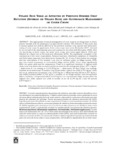Use este identificador para citar ou linkar para este item:
http://www.alice.cnptia.embrapa.br/alice/handle/doc/943075Registro completo de metadados
| Campo DC | Valor | Idioma |
|---|---|---|
| dc.contributor.author | NASCENTE, A. S. | pt_BR |
| dc.contributor.author | CRUSCIOL, A. S. | pt_BR |
| dc.contributor.author | STONE, L. F. | pt_BR |
| dc.contributor.author | COBUCCI, T. | pt_BR |
| dc.date.accessioned | 2012-12-19T11:11:11Z | pt_BR |
| dc.date.available | 2012-12-19T11:11:11Z | pt_BR |
| dc.date.created | 2012-12-19 | pt_BR |
| dc.date.issued | 2013 | pt_BR |
| dc.identifier.citation | Planta Daninha, Viçosa, MG, v. 31, n. 1, p. 147-155, 2013. | pt_BR |
| dc.identifier.uri | http://www.alice.cnptia.embrapa.br/alice/handle/doc/943075 | pt_BR |
| dc.description | The appropriate chemical management of cover crops in no-tillage aims to obtain greater benefits with its employment in agricultural systems. The objective of this study was to assess upland rice yield as affected by the previous summer crop, species and desiccation timing of cover crops by glyphosate. Sown cover crops were sown (November 2007), followed by rice in half of the experimental area and soybean in the other half (November 2008). After the harvesting of these crops, the same cover crops were sown again (March 2009) and followed by upland rice in the total area (November 2009). The experiment consisted of the combination of five cover crops (fallow, Panicum maximum, Brachiaria ruziziensis, B. brizantha and Pennisetum glaucum), four desiccation timings (30, 20, 10 and 0 days before rice sowing), and two antecedents of the summer crop (rice or soybean) under no-tillage system (NTS), plus two control treatments at conventional tillage system (CTS). Cover crops significantly affect rice grain yield and its components. There is a significant tendency to highest yield when cover crop desiccation is conducted farther from the rice sowing date (from 2,577.1 kg ha-1 ? desiccation at rice sowing to 3,115.30 kg ha-1 ? desiccation 30 days before rice sowing). Soybean as an antecedent of summer crop allows better upland rice yield (3,754 kg ha-1) than rice as an antecedent of summer crop (2,635 kg ha-1); fallow/soybean/fallow (4,507 kg ha-1) and millet/soybean/millet (4,765 kg ha-1) rotation at no-tillage system, and incorporated fallow /soybean/ incorporated fallow (4,427 kg ha-1) at conventional tillage system allow the highest rice yield; upland rice yield is similar at no-till (3,194 kg ha-1) and till system (2,878 kg ha-1). | pt_BR |
| dc.language.iso | eng | eng |
| dc.rights | openAccess | eng |
| dc.subject | Penissetum glaucum | pt_BR |
| dc.title | Upland rice yield as affected by previous summer crop rotation (soybean or upland rice) and glyphosate management on cover crops. | pt_BR |
| dc.type | Artigo de periódico | pt_BR |
| dc.date.updated | 2013-10-18T11:11:11Z | pt_BR |
| dc.subject.thesagro | Arroz | pt_BR |
| dc.subject.thesagro | Oryza sativa | pt_BR |
| dc.subject.thesagro | Soja | pt_BR |
| dc.subject.thesagro | Brachiaria brizantha | pt_BR |
| dc.subject.thesagro | Brachiaria ruziziensis | pt_BR |
| dc.subject.thesagro | Panicum maximum | pt_BR |
| dc.subject.thesagro | Manejo do solo | pt_BR |
| riaa.ainfo.id | 943075 | pt_BR |
| riaa.ainfo.lastupdate | 2013-10-18 | pt_BR |
| dc.contributor.institution | ADRIANO STEPHAN NASCENTE, CNPAF; CARLOS ALEXANDRE COSTA CRUSCIOL, UNESP, Botucatu-SP; LUIS FERNANDO STONE, CNPAF; TARCISIO COBUCCI, CNPAF. | pt_BR |
| Aparece nas coleções: | Artigo em periódico indexado (CNPAF)  | |
Arquivos associados a este item:
| Arquivo | Descrição | Tamanho | Formato | |
|---|---|---|---|---|
| 16.pdf | 615,98 kB | Adobe PDF |  Visualizar/Abrir |









